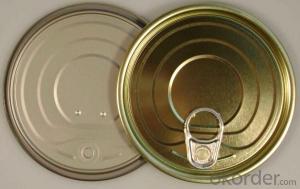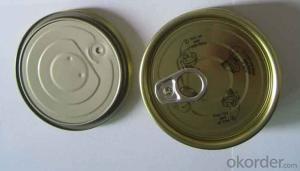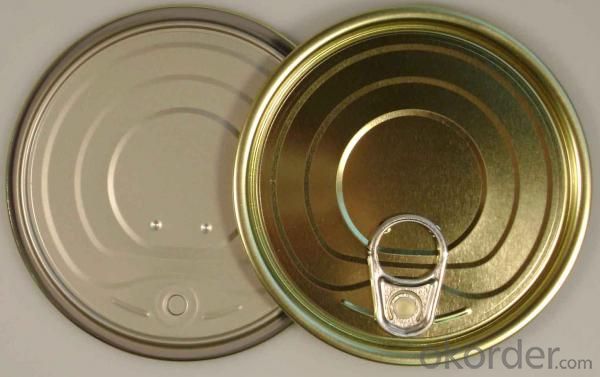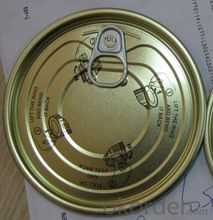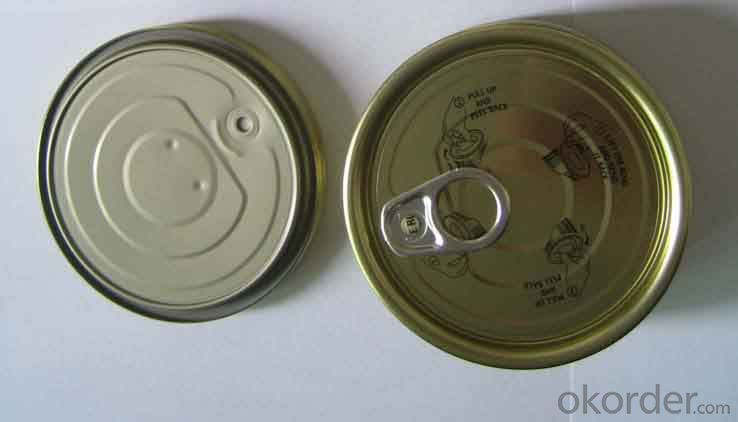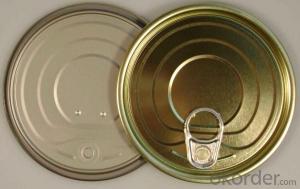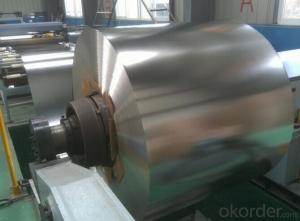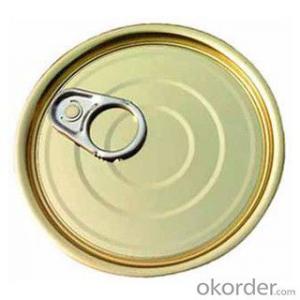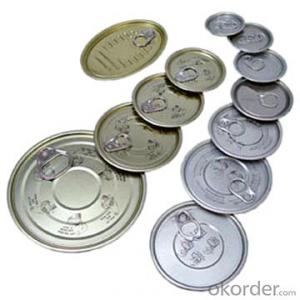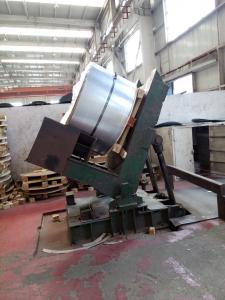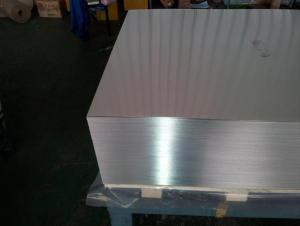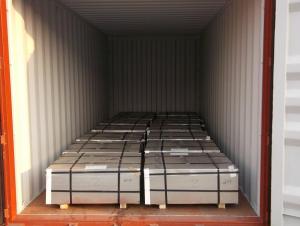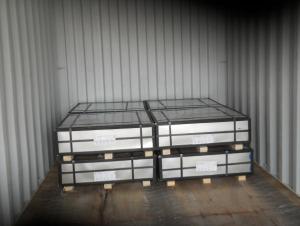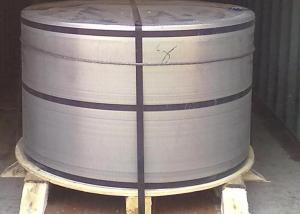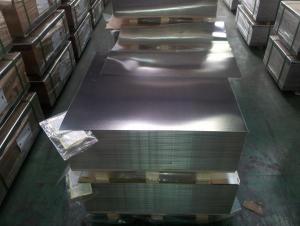High Quality Food Can Easy Open End, 307#
- Loading Port:
- Guangzhou
- Payment Terms:
- TT OR LC
- Min Order Qty:
- 100000 pc
- Supply Capability:
- 100000000 pc/month
OKorder Service Pledge
OKorder Financial Service
You Might Also Like
Name | can easy open end |
Item No. | 307# |
Shape/type | Round |
Size(mm) | Dia 83.3 |
Coating | Aluminized |
Material | Tinplate |
Pcs/20 GP’ | 1,380,000 Customize packing: as clients’ requests. |
Features | 1.Used for packaging of tomato paste,jam,salad…etc. 2.Have illustration printing on the lid. 3.Coating can be according to the customer required. |
Brief Details
Metal Type: Tinplate
Type: Easy Open End, Can lid
Feature: Non Spill, Full open
Custom Order: Accept
Model Number: 307#
Name: 83mm easy open end
Size(mm): 83.3
Inner coating: White porcelain
Shape: Round
Our packing
We could offer package as customers require, by carton or by wooden pallet.
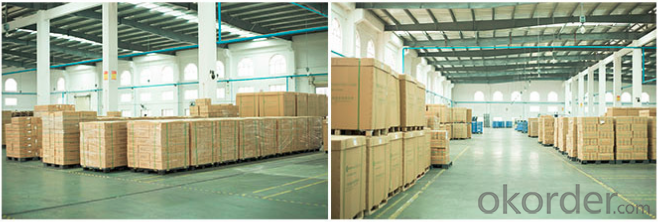
Our Workshop
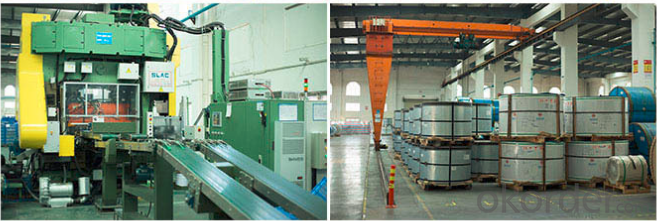
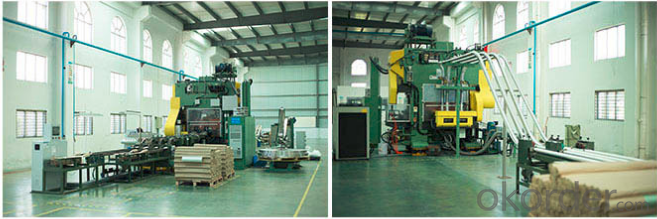
FAQ
1.Q: What is the material of EOE?
We can offer both tinplate and aluminum material made EOE;
2.Q:Could you offer samples for our testing?
YES, we could offer sampler for free if needed;
3. Q:Can you make new mold with customized size I need?
YES, We can make mold for you if reach some qty.
- Q: How does tinplate packaging contribute to product differentiation?
- Tinplate packaging contributes to product differentiation by providing a unique and distinctive look to the product. The shiny and attractive appearance of tinplate packaging sets it apart from other packaging materials, catching the attention of consumers and creating a memorable impression. Additionally, tinplate packaging can be customized with various designs, colors, and patterns, allowing brands to showcase their uniqueness and stand out in the market. Overall, tinplate packaging helps products to differentiate themselves from competitors and create a strong brand identity.
- Q: How does tinplate withstand corrosion?
- Tinplate withstands corrosion due to the presence of a thin layer of tin coating on its surface. This tin layer acts as a barrier, preventing direct contact between the tinplate and the surrounding environment, thus protecting it from rust and corrosion.
- Q: How does tinplate compare to tin-free steel in terms of properties and applications?
- Tinplate and tin-free steel differ in terms of properties and applications. Tinplate has a thin tin coating on its surface, providing excellent corrosion resistance and a shiny appearance. It is commonly used in food and beverage packaging, as well as for decorative purposes. On the other hand, tin-free steel lacks the tin coating and is typically coated with other materials like chromium or polymer. It offers better paint adhesion and is often used in applications such as automotive parts, electrical appliances, and construction materials. Therefore, the choice between tinplate and tin-free steel depends on the specific requirements and intended applications.
- Q: What are the advantages of using tinplate for aerosol cans?
- Some advantages of using tinplate for aerosol cans include its durability, corrosion resistance, and ability to maintain product quality. Tinplate cans offer a longer shelf life for aerosol products as they prevent air and moisture from entering the can, ensuring the product remains fresh and effective. Additionally, tinplate cans are lightweight, making them convenient for transportation and storage. They are also recyclable, contributing to sustainability efforts.
- Q: What are the main trends in tinplate packaging?
- The main trends in tinplate packaging include a shift towards sustainable and eco-friendly options, increased customization and personalization, advancements in technology for improved production processes, and a growing demand for convenience and functionality in packaging design.
- Q: Can tinplate be welded?
- Yes, tinplate can be welded using specialized welding techniques such as spot welding or resistance welding.
- Q: Can tinplate packaging be used for stationery products?
- Yes, tinplate packaging can be used for stationery products. Tinplate is a durable and versatile material that can be shaped into various sizes and designs, making it suitable for packaging pencils, pens, erasers, rulers, and other stationery items. It offers protection against damage, is environmentally friendly, and can be customized with attractive prints or embossing.
- Q: Does tinplate corrode over time?
- Yes, tinplate can corrode over time. The tin coating on the steel surface of tinplate can gradually deteriorate due to exposure to moisture, acids, or other corrosive substances, leading to the formation of rust or corrosion.
- Q: Can tinplate be used for tobacco packaging?
- Yes, tinplate can be used for tobacco packaging. Tinplate is a commonly used material for packaging various products, including tobacco. It offers excellent protection against moisture, light, and external factors, ensuring the quality and freshness of the tobacco. Additionally, tinplate provides durability and can be easily shaped into various packaging designs, making it suitable for tobacco packaging applications.
- Q: What are the disadvantages of using tinplate in packaging?
- One disadvantage of using tinplate in packaging is that it can be more expensive compared to alternative packaging materials such as plastic or cardboard. Additionally, tinplate is prone to corrosion, which can compromise the integrity of the packaging and lead to product spoilage. It is also heavier than other materials, which can increase shipping costs and carbon footprint. Finally, tinplate is not as easily recyclable as some other packaging materials, contributing to environmental concerns.
Send your message to us
High Quality Food Can Easy Open End, 307#
- Loading Port:
- Guangzhou
- Payment Terms:
- TT OR LC
- Min Order Qty:
- 100000 pc
- Supply Capability:
- 100000000 pc/month
OKorder Service Pledge
OKorder Financial Service
Similar products
Hot products
Hot Searches
Related keywords
